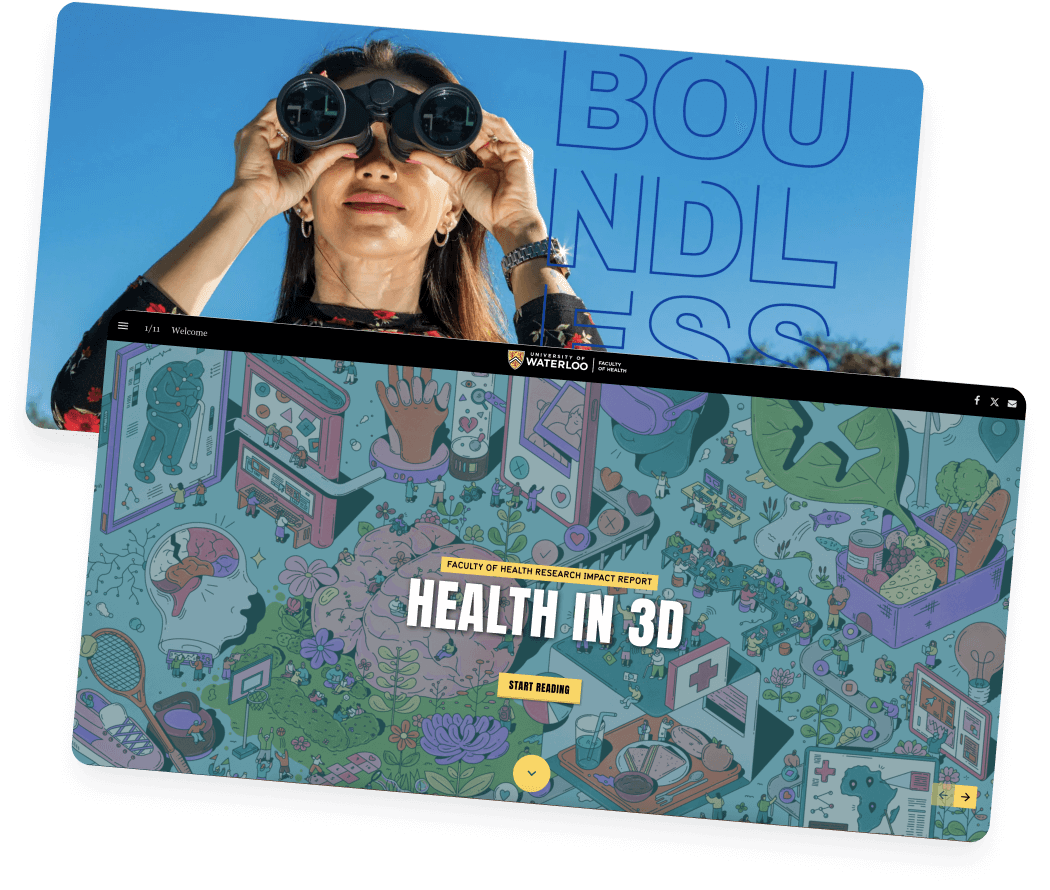In the ever-evolving landscape of higher education marketing, designers play a pivotal role in creating compelling content and communication materials that capture the essence of their institutions while standing out in a highly competitive field.
A 2017 Accenture survey of full-time college students in the United States found that 85% said a high-quality digital experience is essential to their satisfaction with their campus. By 2021, that number increased to 96%.
During UCDA 2023 in Atlanta, we spoke with numerous designers in higher education institutions about the trends and challenges they face that demand a digital edge, strategic thinking, and a constant commitment to excellence.
Here are the four most common trends that came up in conversations, plus some insights into navigating them effectively.
1. Prioritizing accessibility in design
Inclusivity is a top priority for all institutions, and accessibility in design is no exception. Marketing designers must ensure that all content and communication materials are accessible to individuals with disabilities, including those with visual or auditory impairments.
This means adhering to WCAG (Web Content Accessibility Guidelines) standards and creating content that is easy to navigate with screen readers, providing captions for videos, and using high-contrast colors for readability. Not only is this a legal requirement, which can come with $500K fines, but it also reflects an institution's commitment to diversity and inclusivity.
Digital content can further bridge the accessibility gap and reduce compliance risks. Modern content platforms and design tools that champion accessibility help turn print materials into accessible digital content for readers with disabilities.
Discover: How to Make an Effective Education Brochure
2. Balancing print costs and environmental goals
Rising print costs mean universities must strategically use printed materials. Not to mention, they can lead by example when it comes to institutions taking on more actions to drive a sustainable future for the next generations.
"I can tell you that the few print copies we produced most likely got recycled pretty quickly. So it’s just a wasted cost at that point."
Christy Snider, Communications Director at University of California, Merced
While targeted, high-quality print materials can make a lasting impression on university open days or fundraising events; digital content can balance the cost scale.
Digital alumni magazines, university newsletters, brochures, or course guides can reduce costs and the institution’s environmental footprint. Such small changes can have a really big impact.
Read how Université de Moncton cut production costs by 75% after switching to digital alumni magazines here.
3. Content diversification helps institutions thrive
The higher education landscape is getting more and more competitive. Increasing admission numbers and attracting more investors to support the institution financially is no easy feat.
Higher education leaders should employ innovative marketing strategies and new digital platforms to broaden revenue streams, thereby enhancing the support offered to current and prospective students while also securing the financial viability and sustainability of the institution for generations to come.
"In addition to print, we previously made our online magazines in WordPress, but it was very inconvenient and time-consuming. After publishing our digital research studies and sharing them with an international audience, we are confident that we will find new partners from all over the world."
Lenny Gerdes, Editor-in-Chief at Wageningen University & Research
Investments that modernize marketing operations by ramping up digital offerings not only attract new students of various ages but also give institutions a digital edge over the competition. A solid and consistent brand image in both print and digital materials can help higher ed institutions differentiate themselves and leave a lasting impression on their target audience.
4. The need for change management and digitalization
In a recent study by Workday, “Closing the Acceleration Gap: Toward Sustainable Digital Transformation,” just 5% of higher ed leaders said at least half of their daily operations are digitized, the lowest of any industry.
"The challenge we had was to display scientific articles in a more attractive way because people don’t want to spend time on really long articles. In essence, we were looking for ways to engage our readers’ attention. Furthermore, issues such as design and mobile-friendliness played a significant role."
Lenny Gerdes, Editor-in-Chief at Wageningen University & Research
To transform into an institution capable of making well-informed decisions, leaders in higher education must steer the execution of their strategic plans using a dependable, consolidated data source that harmonizes information about marketing strategies, finances, and student-related data.
A digitalization shift will allow teams to monitor critical institutional key performance indicators, including the performance of content materials and effective cost management between print and digital assets.
Read more in our Higher Education Marketing Guide here.
To conclude
Printed content is valuable, but the modern era demands a digital edge. By embracing these trends, higher education institutions can thrive in an ever-competitive environment, attracting the attention and admiration they deserve.
A simple, intuitive digital format can guide students lacking the support systems to navigate complex college environments. Enhanced digital experiences also help those with disabilities or learning differences connect with resources more efficiently. Plus, it will demonstrate your institution is embracing the future, making it more attractive for investments.



